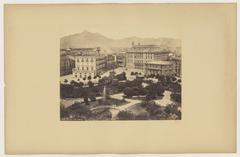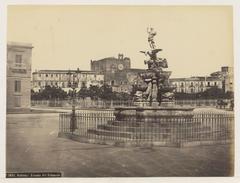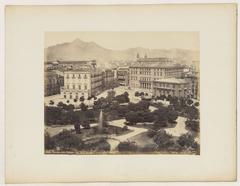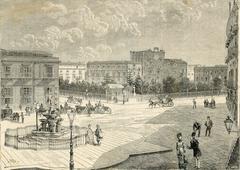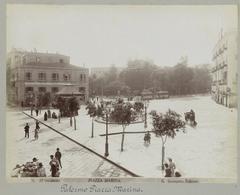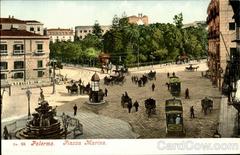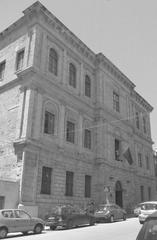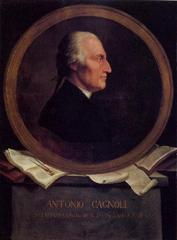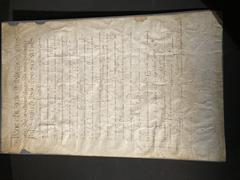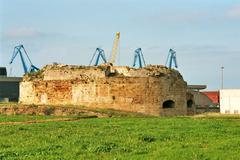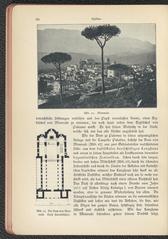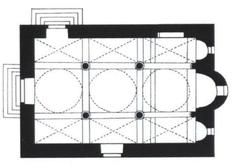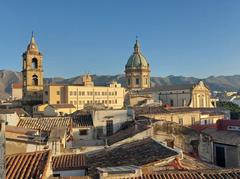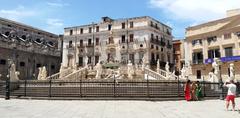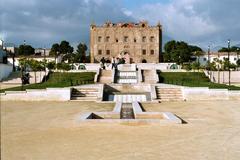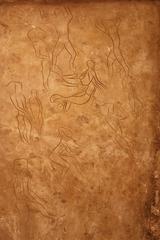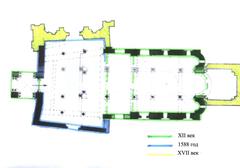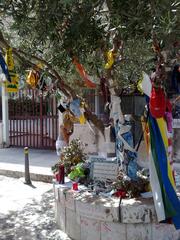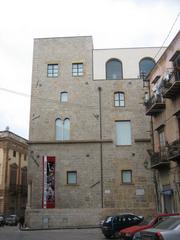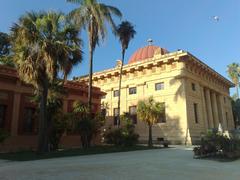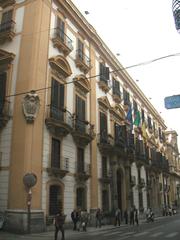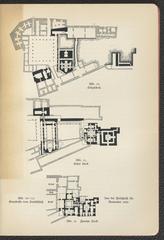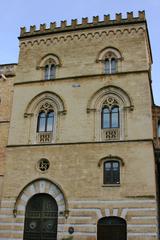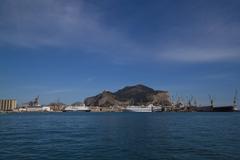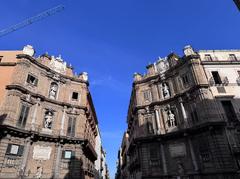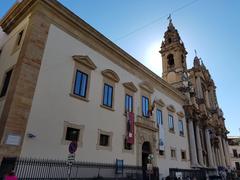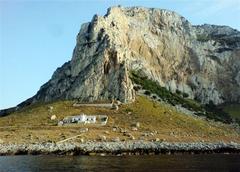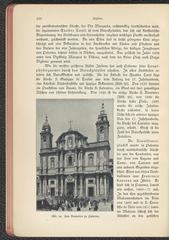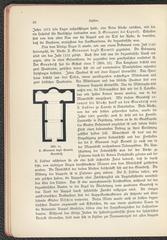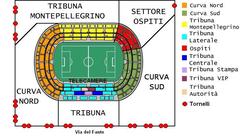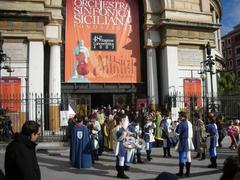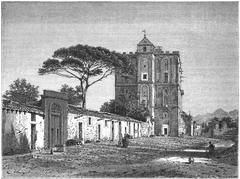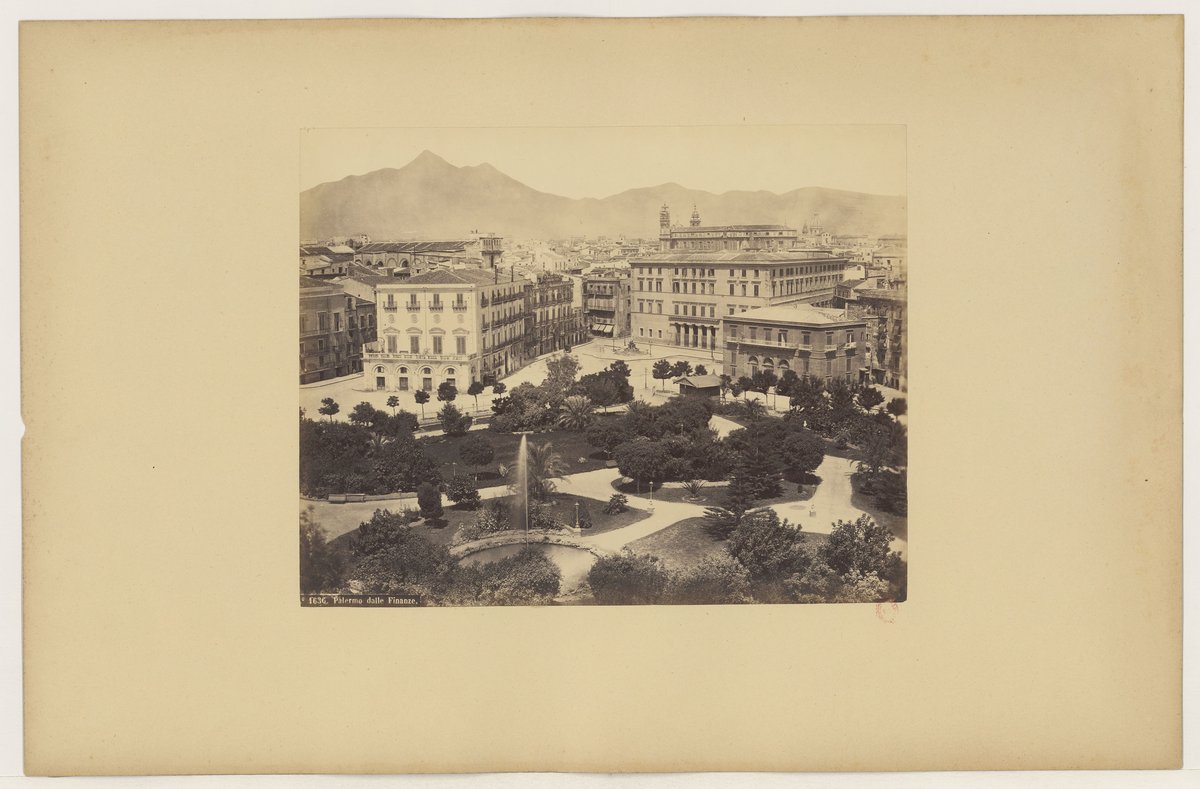
Visiting Hours, Tickets, and Travel Tips for Basilica di San Francesco d’Assisi in Palermo, Italy
Date: 24/07/2024
Introduction
The Basilica di San Francesco d’Assisi in Palermo, Italy, is a monumental testament to the profound historical, architectural, and cultural heritage of Sicily. This Gothic-style Roman Catholic church stands as a beacon of Palermo’s rich past, dating back to the arrival of the Franciscans in Sicily in 1224. Despite facing initial resistance and subsequent destruction orders by Emperor Frederick II, the Franciscans persevered, leading to the church’s reconstruction starting in 1255, under the guidance of Ruffino Gorgone da Piacenza and Bishop Roger of Malta (Wikipedia). Over the centuries, the basilica has undergone numerous restorations, particularly following the devastations of World War II, striving to retain its original 13th-century essence (Enjoy Sicilia). The basilica is not only an architectural marvel but also a repository of Renaissance art, featuring works by Francesco Laurana and Pietro da Bonitate, and sculptures by the Gagini family and Giacomo Serpotta (Lonely Planet). Recognized by Pope Pius XI as a minor basilica in 1924, it continues to play a pivotal role in Palermo’s religious and cultural life, making it a must-visit for history enthusiasts and travelers alike (Wikipedia).
Table of Contents
History of the Basilica di San Francesco d’Assisi, Palermo
Origins and Early Construction
The Basilica di San Francesco d’Assisi in Palermo holds a significant place in the religious and cultural history of Sicily. The church’s origins trace back to the arrival of the Franciscans in Sicily in 1224. Initially, the Franciscans established a convent near the walls of Palermo. However, due to opposition from the local clergy and Saracens, the friars were expelled and sought the intervention of Pope Gregory IX (Wikipedia).
In 1235, the Pope ordered the reconstruction of the convent, taking advantage of the absence of the Archbishop of Palermo, who was in Germany with Emperor Frederick II. The friars converted an old Byzantine fortification dating back to the military campaign of George Maniakes into a new convent. However, in 1239, due to conflicts with the Pope, Frederick II decreed the building’s destruction (Wikipedia).
Reconstruction and Architectural Evolution
The reconstruction of the church began in earnest in 1255 under the direction of the Vicar General of Sicily, Ruffino Gorgone da Piacenza, and the Bishop of Malta, Roger. The work continued during the reign of Charles of Anjou, and by 1302, the main portal and anterior façade were completed in the Chiaramontan-Gothic style (Enjoy Sicilia).
The façade of the basilica, in late Romanesque style, features a precious rose window and a splendid fourteenth-century portal adorned with the insignia of the powerful Chiaramonte family. The ogival arch frame with zigzag motifs is of clear Islamic derivation, reflecting the diverse cultural influences in Sicily during that period (Enjoy Sicilia).
Artistic and Cultural Significance
The Basilica di San Francesco d’Assisi is renowned for its artistic treasures, including the rare arch of the Cappella Mastrantonio, carved in 1468 by Francesco Laurana and Pietro da Bonitate. This chapel is one of the only true examples of Renaissance art in Palermo. Additionally, the church houses sculptures by the Gagini family, Giambattista Ragusa, and Giacomo Serpotta (Lonely Planet).
The planimetric layout of the church remains original, except for the chapels built starting from the fourteenth century. The Cappella Mastrantonio, built in 1470, marks the introduction of Renaissance forms in Sicilian art. The chapel of the Immaculate Conception, from the seventeenth century, is one of the most representative works of the Palermo Baroque, with its sumptuous decoration of polychrome mixed marbles (Enjoy Sicilia).
Restoration and Modern History
The basilica has undergone several restorations due to natural and man-made disasters. Following the earthquake of 1823, the church was restored in a neoclassical style. The disastrous bombings of World War II caused significant damage to the ancient basilica, necessitating further restoration. The post-war restoration aimed to return the church to a simpler style, closer to its ancient appearance (Enjoy Sicilia).
In 1924, Pope Pius XI assigned the title of minor basilica to the church, recognizing its importance in the religious life of Palermo. The church enshrines the Simulacrum of the Immaculate Conception, which is carried through the streets of the historic center every year on December 8, accompanied by thousands of believers (Wikipedia).
Notable Events and Cultural Impact
The Basilica di San Francesco d’Assisi has played a pivotal role in the cultural and religious history of Palermo. It is located near the ancient street of via Cassaro, in the quarter of the Kalsa, within the historic center of Palermo. This location has made it a central figure in the city’s religious and cultural activities (Sygic Travel).
The church’s historical significance is further highlighted by its association with the powerful Chiaramonte family, who were its patrons. The Chiaramonte family’s influence is evident in the church’s architectural and artistic features, reflecting the family’s wealth and power during the medieval period (Enjoy Sicilia).
Visitor Information and Tips
Tickets and Guided Tours
The Basilica di San Francesco d’Assisi is open to visitors throughout the week. The opening hours are Monday to Saturday from 7 am to 11:30 am and 4 pm to 6 pm, and on Sundays from 7 am to 1 pm and 4 pm to 6:30 pm. Masses are held on weekdays at 7:30 am and 5:30 pm, and on Sundays at 7:30 am, 10 am, noon, and 5:30 pm (Sygic Travel).
While entry to the basilica is generally free, guided tours may come with a fee. Visitors can check the official website or local tour operators for ticket prices and availability. Tours provide detailed information about the church’s history, architecture, and artistic treasures. These tours offer a deeper understanding of the basilica’s significance and its role in the cultural and religious life of Palermo (Veronika’s Adventure).
Special Events and Photo Spots
The church is known for hosting various religious events, especially the procession of the Immaculate Conception on December 8. This event is a major attraction and draws many visitors. For photography enthusiasts, the rose window, the Cappella Mastrantonio, and the chapel of the Immaculate Conception provide excellent photo opportunities.
Accessibility and Nearby Attractions
The Basilica di San Francesco d’Assisi is accessible to visitors with disabilities, with ramps and assistance available as needed. Nearby attractions include the Palazzo dei Normanni, the Quattro Canti, and the Kalsa district, all of which are within walking distance and offer a deeper dive into Palermo’s rich history and culture.
FAQ Section
What are the visiting hours for Basilica di San Francesco d’Assisi?
The basilica is open Monday to Saturday from 7 am to 11:30 am and 4 pm to 6 pm, and on Sundays from 7 am to 1 pm and 4 pm to 6:30 pm.
How much do tickets to Basilica di San Francesco d’Assisi cost?
Entry is generally free, but guided tours may come with a fee. Check the official website for up-to-date ticket prices.
Is Basilica di San Francesco d’Assisi accessible?
Yes, the basilica is accessible to visitors with disabilities.
Conclusion
In essence, the Basilica di San Francesco d’Assisi in Palermo is more than just a place of worship; it is a historical and cultural landmark that encapsulates the rich legacy of Sicily. From its Gothic architecture and Renaissance art to its role in Palermo’s religious fabric, the basilica offers a multifaceted experience for visitors. Whether you are exploring its intricate artworks, attending a religious event, or simply soaking in its serene ambiance, the basilica promises a profound and enriching journey through time. Its accessibility features and proximity to other historical attractions in Palermo further enhance its appeal, making it an essential stop on any itinerary. As you plan your visit, remember to check the official website for the latest information on opening hours and guided tours to make the most of your experience (Wikipedia; Enjoy Sicilia).
References
- Wikipedia. (n.d.). San Francesco d’Assisi, Palermo. Retrieved from https://en.wikipedia.org/wiki/San_Francesco_d%27Assisi,_Palermo
- Enjoy Sicilia. (n.d.). Basilica di San Francesco d’Assisi, Palermo. Retrieved from https://www.enjoysicilia.it/en/palermo-area//palermo/basilica-san-francesco-assisi-palermo
- Lonely Planet. (n.d.). Chiesa di San Francesco d’Assisi. Retrieved from https://www.lonelyplanet.com/italy/sicily/palermo/attractions/chiesa-di-san-francesco-d-assisi/a/poi-sig/458759/360009
- Sygic Travel. (n.d.). Church of St. Francis of Assisi. Retrieved from https://travel.sygic.com/en/poi/church-of-st-francis-of-assisi-poi-4627
- Veronika’s Adventure. (n.d.). Basilica of St. Francis of Assisi Tour with Official Guide. Retrieved from https://veronikasadventure.com/basilica-of-st-francis-of-assisi-tour-with-official-guide/
